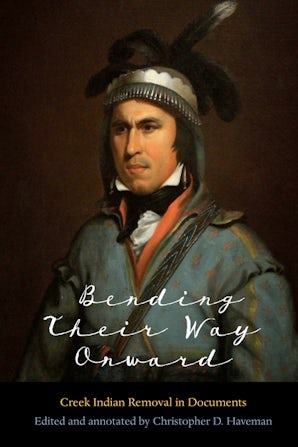
864 pages
10 illustrations, 17 maps, index
February 2018
978-1-4962-0414-1
$50.00 Add to Cart2018 Choice Outstanding Academic Title
2019 Dwight L. Smith (ABC-CLIO) Award from the Western History Association
Between 1827 and 1837 approximately twenty-three thousand Creek Indians were transported across the Mississippi River, exiting their homeland under extreme duress and complex pressures. During the physically and emotionally exhausting journey, hundreds of Creeks died, dozens were born, and almost no one escaped without emotional scars caused by leaving the land of their ancestors.
Bending Their Way Onward is an extensive collection of letters and journals describing the travels of the Creeks as they moved from Alabama to present-day Oklahoma. This volume includes documents related to the “voluntary” emigrations that took place beginning in 1827 as well as the official conductor journals and other materials documenting the forced removals of 1836 and the coerced relocations of 1836 and 1837.
This volume also provides a comprehensive list of muster rolls from the voluntary emigrations that show the names of Creek families and the number of slaves who moved west. The rolls include many prominent Indian countrymen (such as white men married to Creek women) and Creeks of mixed parentage. Additional biographical data for these Creek families is included whenever possible. Bending Their Way Onward is the most exhaustive collection to date of previously unpublished documents related to this pivotal historical event.